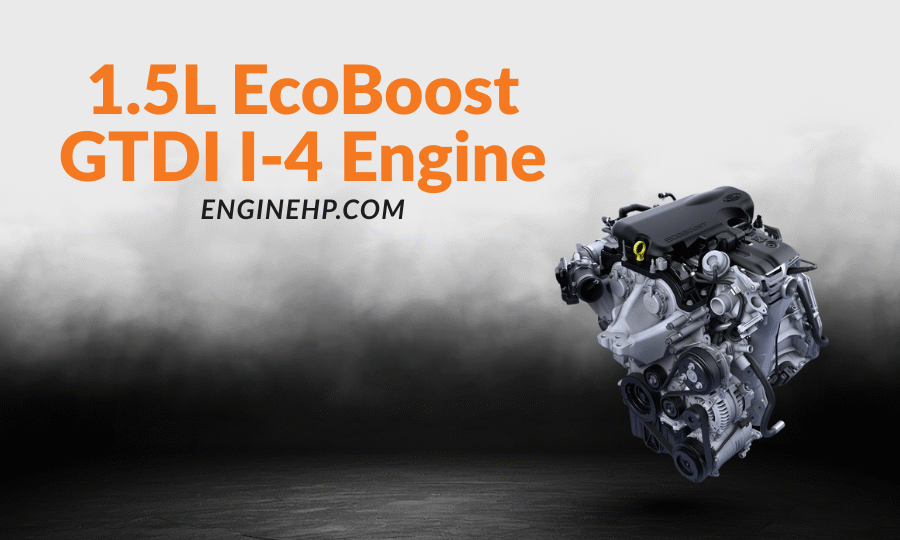
Ford Engines: 1.5L EcoBoost GTDI I-4 Engine Hp, Reliability, and Performance
The smaller the better-stronger, that is the EcoBoost philosophy at Ford. The 1.5L EcoBoost GTDI I-4 engine sits at the heart of it all, delivering a powerful and compact yet efficient engine. It is a hit among those people that want efficiency without sacrificing performance, not to mention making it a wise decision as far as businesses offering eco-friendly automobiles are concerned.
So how does this engine compare? What might buyers and fans, as well as even business learn out of its story? Now, we will have a closer look.
The Birth of the 1.5L EcoBoost GTDI I-4
Introduced in 2014, the 1.5L EcoBoost came out as a middle child in Ford turbo lineup- the 1.0L EcoBoost I-3 and the 2.0L EcoBoost I-4. It was straightforward in its mission, to provide an innovative balance of affordability, performance and efficiency.
Why 1.5L? Those downsizes were not arbitrary, they were targeting tax brackets in places such as China and some parts of Europe, where the engine size bigger than 1.6 is charged a higher tax. This makes Ford attractive to markets around the world, since it provides good performance in a small package, under 1.6L.
It first appeared in the Ford Fusion (Mondeo in Europe) and quickly made it to the Escape, Edge and the Focus making it a versatile and worldwide engine.
Under the Hood: How It Works
The Gasoline Turbocharged Direct Injection (GTDI) platform is the feature of the group. It guarantees an accurate fuel mixture, greater efficiency as well as clean emissions. Working together with Ford EcoBoost engineering, it becomes a package that may be compact, but will never feel underpowered.
Key Engineering Highlights
- Turbocharging: upgrading the engine with lungs twice the size.
- TDI (Direct Injection): Fuel is shot directly into the combustion chamber which burns faster and cleaner.
- Twin Independent Variable Camshaft Timing (Ti-VCT): Allows managed airflow by adjusting in real-time, to improve responsiveness of throttle.
- Integrated Exhaust Manifold: Eliminates turbo lag and heats-up quicker reducing cold-start emissions.
- Aluminum Block & Head: This head is light, heat-efficient and reduces vibrations.
This is performance-based as well as a daily driving engine.
Performance Specs
The performance will vary based on model year and tuning, but expect approximate figures to be:
| Manufacturer | Craiova, Romania |
| Production years | 2014-present |
| Cylinder block material | Aluminum |
| Cylinder head material | Aluminum |
| Fuel type | Gasoline |
| Fuel system | Direct fuel injection |
| Configuration | Inline |
| Number of cylinders | 4 |
| Valves per cylinder | 4 |
| Valvetrain layout | DOHC |
| Bore, mm | 79.0 mm (3.10 in) |
| Stroke, mm | 76.4 mm (3.00 in) |
| Displacement, cc | 1498 cc (91.4 cu in) |
| Type of internal combustion engine | Four-stroke, turbocharged |
| Compression Ratio | 10.0:1 |
| Power, hp | 148-181 hp (110-135 kW)/ 6,000 |
| Torque, lb ft | 177 lb-ft (240 Nm)/ 1,500-4,500 |
| Engine weight | – |
| Firing order | 1-3-4-2 |
| Engine oil capacity, liter | 4.1 l (4.3 US qt) |
| Engine oil weight | SAE 5W-20 |
| Oil recommendations and capacity may vary depending on the car model, year, and market. Please check the service manual specific to your vehicle! | |
| Oil change interval, mile | 9,000 (15,000 km) or 12 month |
| Cars with this engine | Ford Focus, Ford C-Max, Ford Fusion/Mondeo, Ford Escape/Kuga |
On the road this means:
- Remarkable in-town driving suited to substantial low-end torque.
- Bravery to merge and pass on the highway.
- Low fuel-costs as compared to naturally aspirated 2.0L engines.
Awards and Recognition
Available in 1.5L variant, the EcoBoost did not gain headlines but still, it was in the news. Several industry analysts dubbed it the sweet spot engine at Ford, it was potent enough to power larger vehicles such as SUVs as well as efficient enough to power smaller vehicles such as compacts.
It is compared to other similar base engines such as the M40B16 Engine found in BMW which was a reliable 1.6 L four cylinder engine used in the beginning of the 90s which offered a similar property of cheapness and easy use. Both engines set the standard efficiency of their respective times.
Why Buyers Choose It
To the car buyer, 1.5L EcoBoost GTDI I-4 can be summarized into four areas of interest:
- Fuel Efficacy Without Sacrifice: compared to older small-displacement engines, this one does not lack outright performance with the help of its turbo.
- Practical Costs to Run: Low insurance covers and taxes in some areas make it cost efficient.
- Eco-Friendly Driving: buyers who are conscious of emissions view it as a step toward a greener drive without going hybrid/electric.
- Adaptability to Different Models: Applies in small sedan cars, comfort SUVs and even in cross overs.
Vision this: A motorist with a Fusion has easy morning-to-evening commutes with rolling mid-range torque, and a family of four in an Escape has no worries about safe highway passing. One Mind, Two very different Lifestyles each content.
Real-World Driving Experience
Owners tend to feel the 1.5L EcoBoost is quiet confidence. It is not that a sports car engine, but also does not fail in most of the scenarios:
- City Use: The turbo provides low-end torque, which makes traffic on stop and go less tiring.
- Highway Cruising: Provides easy passing on the highway with no need to downshift frequently.
- Load: With SUVs like the Escape, the engine can be able to tow light trailers proving that it is not only an engine that drivers use when commuting.
Such versatility is what made it a worldwide best-seller in the Ford family.
The Business Perspective: Why Automakers Love It
In the case of automakers, engines are no longer solely about performance; engines also have to be about compliance, scale and price.
- Global Market Fit: Because of its sub-1.6L, it evades higher tariffs in a number of countries.
- Fleet Emissions Compliance: Assists Ford with U.S. CAFE regulations and the certification to European Euro 6 standards.
- Scalability: A single engine is applicable to a variety of vehicle types, cutting down on the costs of research and production.
- Brand Image: EcoBoost is now the term associated with new-age efficiency.
Apart from their business objectives in the 1990s, the M40B16 Engine also similarly guides the 1.5L EcoBoost GTDI I-4 to serve the business needs of Ford in the 2010s and beyond.
Comparing the 1.5L EcoBoost GTDI I-4 with the M40B16 Engine
| Feature | 1.5L EcoBoost GTDI I-4 | M40B16 Engine (BMW) |
|---|---|---|
| Displacement | 1.5L | 1.6L |
| Cylinders | 4 | 4 |
| Turbocharged | Yes | No (naturally aspirated) |
| Horsepower | 150–181 hp | ~102 hp |
| Torque | ~177–184 lb-ft | ~107 lb-ft |
| Fuel Economy | Up to 37 mpg (U.S.) | ~35 mpg (1990s figures) |
| Era | 2014–present | 1989–1994 |
This parody reflects the advancement in hiring out three decades: the M40B16 Engine was the embodiment of a trusted and simple mechanism, whereas the EcoBoost is an embodiment of the cabin pressure forced by novelty.
Reliability: Strengths and Weaknesses
There is not a modern engine without them. The 1.5L, EcoBoost GTDI I-4 has displayed reliability and vulnerability.
Common Issues
- Coolant Intrusion (20142017 models): Certain motors were affected by leaking coolant that led to overheating. Ford subsequently redone the design
- Carbon Buildup: Direct injection engines are known to have a lot of build up on it. To keep your air clean there is a recommended schedule of cleanings
- Turbo Stress: Constant hard use without a cool down period will wear a turbo prematurely.
Maintenance Tips
- Change oil religiously using synthetic oil of high quality.
- When possible use quality fuel to ensure that there is a cleaner combustion.
- The long and hard drives must take a period of 30-60 seconds off to prevent turbo damage.
- used buyers: make sure recalls were handled.
Proper care yields a reported fuel mileage of 150,000+ miles to 200,000+ miles of reliable use.
Tuning and Aftermarket Potential
Enthusiasts will enjoy the fact that the 1.5L EcoBoost has untapped potential. It can be tuned to make 200+ hp with an ECU set up and/or bolt-on modifications, yet still a daily driver.
Favourite additions are:
- Power and performance fine tuning mapped within ECU channels.
- Large-volume air/exhaust systems.
- New high flow intercooler to decrease turbo this heat soak.
This is why it is a playground of those people who desire efficiency during the weekdays and excitement during weekends.
Where You’ll Find It
The 1.5L EcoBoost GTDI I-4 is found in a number of Ford models across the world:
- Ford Fusion / Mondeo: Sedan of the middle size with economy.
- Ford Escape / Kuga: A popular SUV alternative
- Ford Edge (select trims): the larger body with still sufficient power.
- Focus (international markets): Compact performance meets practicality.
This massive adoption shows its flexibility of usage even in different segments
The Future of Engines Like the 1.5L EcoBoost
Despite the attention given to the EVs, small turbocharged engines will be needed. Why?
- Hybrids: Can be paired with an electric motor to provide an extension.
- Emerging Markets: Expensive where there is a lag in EV infrastructure.
- Affordability: The market is not ready to buy EVs yet with low efficiency combustion engines.
The 1.5L EcoBoost is in that way a transitional vehicle, one that would only be universally accepted in terms of driving experience by a relative minority of the population, who have an affinity to the mechanical and who hate to drive around in cars that feel like they lack personality or soul. Much in that way the M40B16 Engine was, by bridging the gap of carbureted simplicity with the fledgling fuel injection.
Conclusion: The Sweet Spot Engine
Whether the combination of 1.5L EcoBoost GTDI I-4 engine and the freshly-made Kia sedan is regarded as the interface between two point boundaries, it is a representation of balance that drivers require these days. It is a combination of power, efficiency and reliability with just the right amount of versatility on sedans, SUVs and crossovers.
To people who purchase it, it is that good old-fashioned Goldilocks engine that is not too strong and not so dull either but is perfectly decent. To business, it is not only a cost effective compliance tool but also a reputation enhancing tool in brand terms. And to the enthusiasts, it provides tuning potential that they can still enjoy driving everyday.
Just like the M40B16 Engine in the 1990s, the 1.5L EcoBoost will remain in history as one that did not do the most spectacular things, but just got everything right at its time.
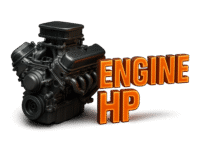

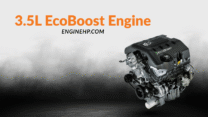
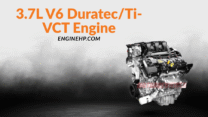

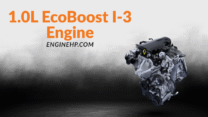

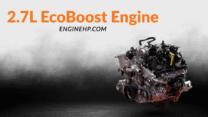

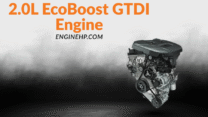
Leave a Reply